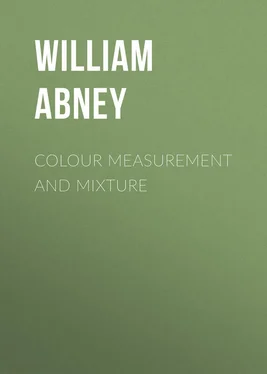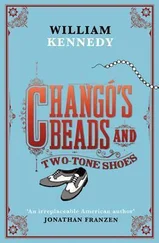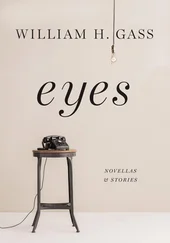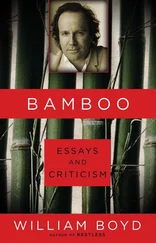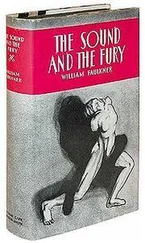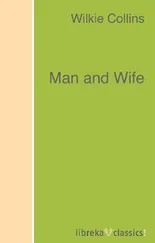William Abney - Colour Measurement and Mixture
Здесь есть возможность читать онлайн «William Abney - Colour Measurement and Mixture» — ознакомительный отрывок электронной книги совершенно бесплатно, а после прочтения отрывка купить полную версию. В некоторых случаях можно слушать аудио, скачать через торрент в формате fb2 и присутствует краткое содержание. Жанр: foreign_antique, foreign_prose, на английском языке. Описание произведения, (предисловие) а так же отзывы посетителей доступны на портале библиотеки ЛибКат.
- Название:Colour Measurement and Mixture
- Автор:
- Жанр:
- Год:неизвестен
- ISBN:нет данных
- Рейтинг книги:3 / 5. Голосов: 1
-
Избранное:Добавить в избранное
- Отзывы:
-
Ваша оценка:
- 60
- 1
- 2
- 3
- 4
- 5
Colour Measurement and Mixture: краткое содержание, описание и аннотация
Предлагаем к чтению аннотацию, описание, краткое содержание или предисловие (зависит от того, что написал сам автор книги «Colour Measurement and Mixture»). Если вы не нашли необходимую информацию о книге — напишите в комментариях, мы постараемся отыскать её.
Colour Measurement and Mixture — читать онлайн ознакомительный отрывок
Ниже представлен текст книги, разбитый по страницам. Система сохранения места последней прочитанной страницы, позволяет с удобством читать онлайн бесплатно книгу «Colour Measurement and Mixture», без необходимости каждый раз заново искать на чём Вы остановились. Поставьте закладку, и сможете в любой момент перейти на страницу, на которой закончили чтение.
Интервал:
Закладка:
Sir William de Wiveleslie Abney
Colour Measurement and Mixture
PREFACE
Some ten years ago there were three measurements of the spectrum which I set myself to carry out; the last two, at all events, involving new methods of experimenting. The three measurements were: (1st) The heating effect; (2nd) the luminosity; and (3rd) the chemical effect on various salts, of the different rays of the spectrum. The task is now completed, and it was in carrying out the second part of it that General Festing, who joined me in the research, and myself were led into a wider study of colour than at first intended, as the apparatus we devised enabled us to carry out experiments which, whilst difficult under ordinary circumstances, became easy to make. On two occasions, at the invitation of the Society of Arts, I have delivered a short course of lectures on the subject of Colour, and naturally I chose to treat it from the point of view of our own methods of experimenting; and these lectures, expanded and modified, form the basis of the present volume.
As a treatise it must necessarily be incomplete, as it scarcely touches on the history of the subject – a part which must always be of deep interest. The solely physiological aspect of colour has also been scarcely dealt with; that part which the physicist can submit to measurement being that which alone was practicable under the circumstances.
W. de W. Abney.South Kensington,
1st May, 1891.
CHAPTER I
Sources of Light – Reflected Light – Reflection from Roughened Surfaces – Colour Constants.
There is nothing, perhaps, in our everyday life which appeals more to the mind than colour, yet so accustomed are the generality of mankind to its influence that but few stop to inquire the "why and wherefore" of its existence, or its cause. To those few, however, there is a source of endless and boundless enjoyment in its study; for in the realms of physical and physiological science there is perhaps no other subject in which experiments give results so fascinating and often so beautiful. Although its serious study must be undertaken with a clear mind, a good eye, and a fair supply of patience, yet a general idea of the subject may be grasped by those who are possessed of but ordinary intelligence.
Colour phenomena are encountered nearly every day of one's life, and the fact that they are so frequently met with, prevents that attention to them, or even their remark. Who amongst us, for instance, has noticed the existence of what are called positive and negative after images, after looking at some strongly illuminated object, or would have gauged the fact that a certain portion of the nervous system can be fatigued by a colour, and give rise to images of its complementary, had not an enterprising advertiser, who manufactures a household necessary, drawn attention to it in a manner that could not be misunderstood.
If on an autumn afternoon we pass through a garden whilst it is still perfectly light, we can notice the gorgeous colouring of the flowers, and appreciate with the eyes the beauty of each tint. As evening comes on the tints darken, the darkest-coloured flowers begin to lose their colour, and only the brightest strike the eye. When night still further closes in every colour goes, though the outlines of the flowers may still be distinguished; and it would not be impossible, in some parts, to see a tiny speck of pale light upon the ground amongst them. This speck of light we should know from experience to be the light from a glow-worm. Why is it that we lose the colour of the flowers and recognize the tiny light from this small worm? The reason for the one is that in order for objects which are not self-luminous to be seen at all, light must fall on them and illuminate them, and the light which they reflect may be coloured if they possess the qualities to reflect coloured light. The glow-worm's light is seen, not because it does not emit light in the day-time, but because the eye, being limited in sensitiveness, is unable to distinguish it when it is flooded with the light of day. The glow-worm, however, is self-luminous, as is shown by the fact that it emits light in the dark, the light itself being slightly coloured if compared with that of day. That a candle-flame or the sun is self-luminous is an axiom, and need not be philosophised upon; but what must be impressed on the reader is, that though an object which requires to be illuminated to be seen, is not self-luminous, yet when illuminated it does in fact become a source of illumination to the eye, although the light is only light reflected from its surface. It is a point worth remembering that the rougher the surface of an object, the brighter to the eye it will be. That is, a coloured object when polished will be a bad secondary source of illumination, as the light incident upon it will be very nearly reflected from the surface, according to the ordinary laws of reflection; but if it be roughened it will become a much better source, as the roughnesses, though obeying the laws of reflection, will reflect light in every direction. A good example of this is an ordinary sheet of glass. Light from a source falling on its surface is scarcely reflected in any direction except in that determined by the ordinary laws of reflection, and it will be scarcely visible to the eye. Grind its surface, however, and the innumerable facets caused by the grinding will reflect light back to the eye in whatever position it be placed, and will thus be distinctly seen.
We may here premise that even the roughest surface will reflect a greater percentage – varying greatly according to the nature of the surface – of light in the direction which it would do if it were a smooth surface than in any other; and in taking measurements of the light irregularly reflected from a rough surface, this fact must be borne in mind.
Not only must we know how colour is produced, but we must also be able to refer it to some standard which shall be readily reproduced, and which shall be unalterable. There are two variable factors which have to be taken into account in colour experiments: the first is the quality of light which illuminates the object, and the second is the sensitiveness of the eye which perceives it, as light is only a sensation which is recognized by the brain through the medium of the eye. We shall, as we go on, see that different qualities of light may cause objects to appear of different hues, and further that eyes may vary in perceptive power, to an extent of which the large majority of people are not aware. Hence it becomes necessary as far as possible to eliminate these variables.
The task which we have set ourselves to perform then, is first to find a suitable light for experimental work, and next to endeavour to refer colour to an eye which has no abnormal defects. This being accomplished, we have then to find means to measure the different constants which are involved in colour, and to refer the measurements to some standard. Colour constants are three, viz. hue, luminosity, and purity; and it will be seen that if these three are determined, the measurement of the colour is complete.
Perhaps the meaning of these terms may require to be explained. The hue of a colour is what in common parlance is often called the colour. Thus we talk of rose, violet, magenta, emerald green, and so on, but for measuring purposes the hue had best be referred to the spectrum colours as a standard (the means of doing so will be shortly explained), for they are simple colours, which can be expressed by numbers. Compound colours, which it may be said are invariably to be found in nature, being mixtures of simple colours, can be just as readily referred to the spectrum. By the luminosity of a colour we mean its brightness, the standard of reference being the brightness of a white surface when illuminated by the same white light. By the purity of a colour we mean its freedom from admixture with white light. An example of different degrees of purity will be found in washes of water-colours of different tenuity. Thus if we wash a sheet of paper with a light tint of carmine, the whiteness of the paper is not obliterated; if we pass another wash over it the whiteness of the paper is lessened, and so on. The lightest tint is that which is most lacking in purity.
Читать дальшеИнтервал:
Закладка:
Похожие книги на «Colour Measurement and Mixture»
Представляем Вашему вниманию похожие книги на «Colour Measurement and Mixture» списком для выбора. Мы отобрали схожую по названию и смыслу литературу в надежде предоставить читателям больше вариантов отыскать новые, интересные, ещё непрочитанные произведения.
Обсуждение, отзывы о книге «Colour Measurement and Mixture» и просто собственные мнения читателей. Оставьте ваши комментарии, напишите, что Вы думаете о произведении, его смысле или главных героях. Укажите что конкретно понравилось, а что нет, и почему Вы так считаете.
